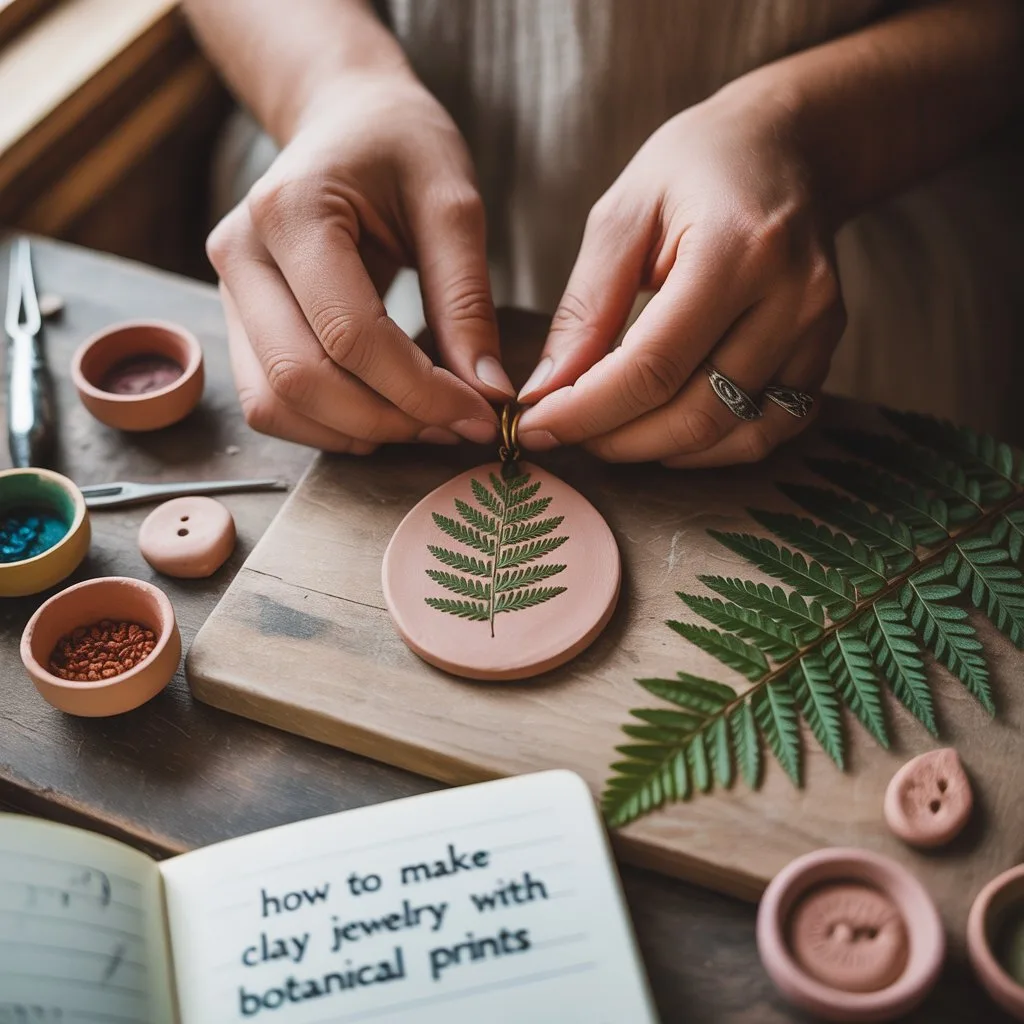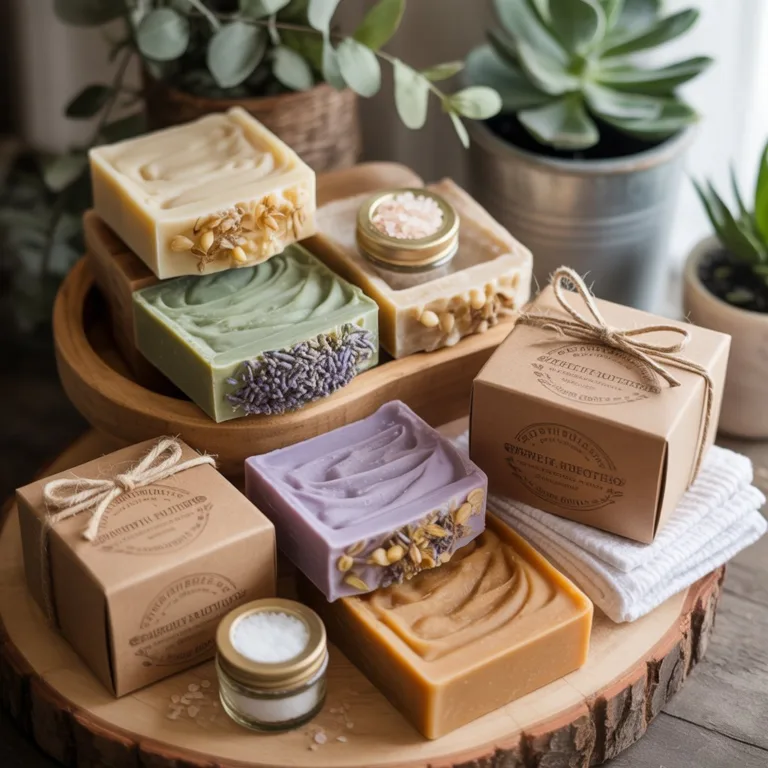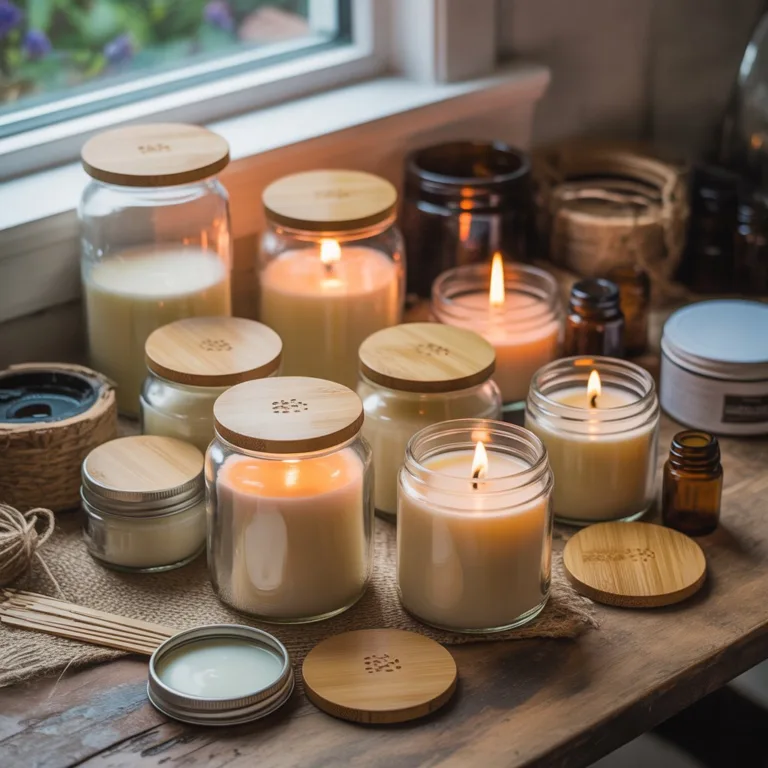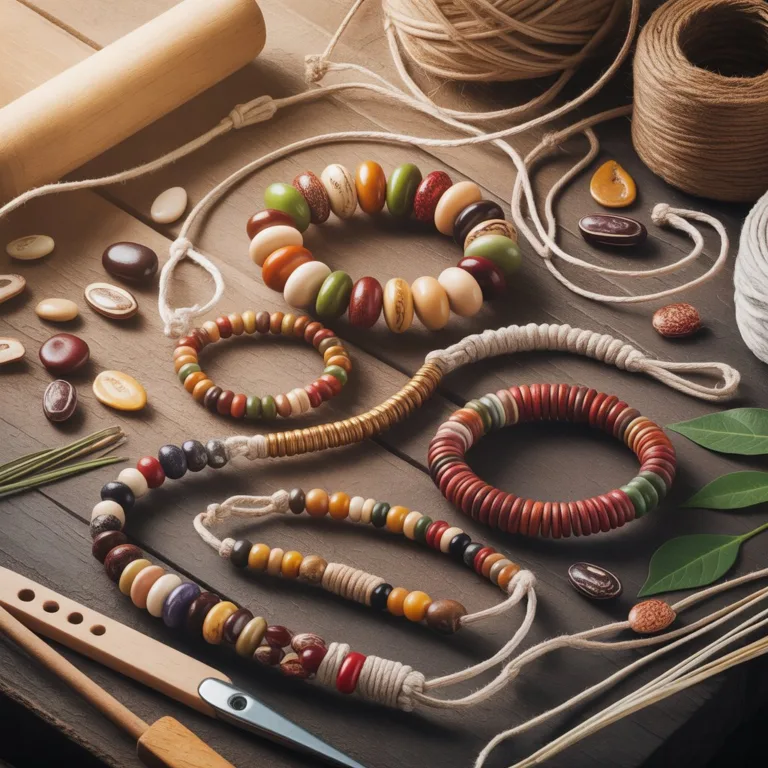Creating clay jewelry with botanical prints is a beautiful and sustainable way to combine nature and art. This craft allows you to capture the delicate patterns of leaves, flowers, and herbs, turning them into wearable pieces of natural beauty. Whether you’re crafting for fun, gifts, or to start a small eco-friendly jewelry line, using botanical prints on clay offers endless creativity and personalization.

Choosing the Right Clay for Botanical Jewelry
The foundation of any clay jewelry project lies in the material. Air-dry clay, polymer clay, and natural clay all work beautifully, but the choice depends on your tools and desired finish.
- Air-dry clay is ideal for beginners — no kiln or oven required. It dries naturally and can be painted or sealed afterward.
- Polymer clay is more durable and comes in a range of colors. It must be baked but holds fine botanical details exceptionally well.
- Natural clay creates an earthy, rustic look. When fired, it’s incredibly strong but requires more advanced handling.
Whichever clay you choose, always condition it well before pressing the plants — knead it until it’s soft and pliable to avoid cracks or bubbles in the final piece.
Selecting the Perfect Botanicals
The charm of clay jewelry with botanical prints comes from the plants themselves. Choose leaves, flowers, or herbs with visible veins and textures. Ferns, mint, rosemary, lavender, and eucalyptus are popular choices because their fine details imprint beautifully on soft clay.
To prepare your plants:
- Pick them fresh but blot away excess moisture.
- Use a rolling pin or acrylic roller to gently press the plant onto the clay surface.
- Experiment with direction and layering — overlapping small leaves can create interesting organic compositions.
Each impression will be unique, just like nature itself.
Pressing and Cutting the Clay
Once your botanical imprint is in place, carefully peel away the plant. You’ll see the natural texture beautifully transferred onto the surface. Use small cookie cutters, geometric templates, or freehand designs to shape your jewelry pieces. Circles, ovals, and organic leaf shapes work particularly well.
If you’re making earrings or pendants, use a toothpick or skewer to create holes for hooks or cords. Smooth the edges gently with a damp finger or a soft sponge to prevent sharp corners.
Let the clay rest on a flat surface — polymer clay will need baking according to the brand’s instructions, while air-dry clay should dry completely over 24–48 hours.
Coloring and Finishing Your Jewelry
Once dry or baked, your botanical clay jewelry is ready for decoration. You can keep the natural clay tone for an earthy aesthetic or enhance the design with color.
- Acrylic paints work well for highlighting raised details or filling in the impressions with contrasting tones.
- Natural pigments like turmeric, spirulina, or beetroot powder can be mixed into clear sealants for eco-friendly coloring.
- Metallic finishes using bronze or gold leaf add a subtle shimmer while still preserving the organic charm.
After painting, seal your jewelry with an eco-friendly varnish or beeswax polish to protect it from moisture and wear. This also enhances the texture and color depth of the botanical prints.
Adding Findings and Final Touches
Attach earring hooks, jump rings, or necklace cords using small jewelry pliers. Choose stainless steel, brass, or nickel-free materials to keep your pieces safe for sensitive skin.
For a more natural look, use waxed cotton cords or hemp twine instead of metal chains. You can also combine several small clay pieces into layered designs or add wooden or glass beads for contrast.
Remember, clay jewelry doesn’t have to be perfect — the small variations and textures make each piece a miniature work of art.
Sustainable Crafting Practices
One of the most rewarding aspects of making clay jewelry with botanical prints is its sustainability. You can reduce waste by using leftover clay scraps for test imprints or smaller beads. Collect plants responsibly — avoid picking from protected areas and favor garden trimmings or fallen leaves.
When sealing and finishing, opt for non-toxic, water-based varnishes to minimize environmental impact. Reusing packaging materials for storing or gifting your jewelry also reinforces the eco-friendly values behind your craft.
This project can also be a wonderful educational activity for children or community workshops. It teaches patience, creativity, and respect for natural materials while promoting awareness of sustainable crafting practices.
Bringing Nature Into Wearable Art
Making clay jewelry with botanical prints allows you to transform everyday leaves and flowers into meaningful, wearable art. Each pendant or pair of earrings becomes a small reminder of the beauty and impermanence of nature.
Whether you’re experimenting with simple leaf impressions or creating intricate floral patterns, the process itself is calming and rewarding. Take time to explore textures, mix materials, and enjoy the tactile connection between your hands, the clay, and the natural world around you.
If you found joy in this eco-friendly project, keep exploring other sustainable crafts that bring nature into your creative journey — and perhaps inspire others to do the same.

Lucas Hartman is a DIY enthusiast and sustainability advocate focused on natural crafts and eco-friendly home décor. With a background in arts and design, Lucas creates tutorials that help families and hobbyists transform everyday recycled or organic materials into beautiful, functional projects.



